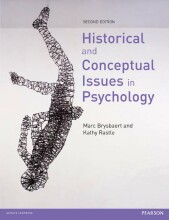Eye tracking
13 important questions on Eye tracking
Which measurements are you taking within eye tracking data?
- Fixations
- (Micro)saccades
- Pupillometry
- Spontaneous blink rate
How are fixations and saccades related?
- The eye moves (saccade) from one fixated location to the next
- the saccade is the movement from one location to the other.
- Each saccade is followed and preceded by a fixation
What are the dependent variables of fixations?
- A fixation is when the eyes are pointed to a certain locations.
- from these fixations, the following dependend variables can be created which can be grouped in three categories;
- Where
- Location of first fixation upon stimulus presentation
- Starting from a standard fixation point; fixation point for example or another stimulus
- this can be quantified by counting the total number of fixations in Area of Interest (AOI)
- How long
- Duration of first fixation; how long do eyes stay in aoi
- can be quantified by summing total duration of fixations in an AOI
- How
- mapp out the fixation path: Which areas / locations are fixated in what sequence.
- Higher grades + faster learning
- Never study anything twice
- 100% sure, 100% understanding
What is an important phenomenon in eye movement behavior often seen in reading?
- Regression is when the eyes return to a part that they have already been before. This indicates that that location has some significance to processing of the stimulus.
- in reading this often happens when a sentence is grammatically incorrect, the point where the sentence deviates from what was expected (the gramatically correct version of the sentence), is then often returned to to make sense of the sentence.
Which cognitive processes can be reflected in fixations?
- Attention;
- what are they attending to
- Surprise/ depth of processing/ cognitive effort
- longer fixations can indicate surprise, or require more time to process the stimulus component
- Content of thought/ reasoning
- the sequence of fixated locations indicate the line of reasoning someone has gone through
- in this example; only the first part of the sentence was shown and required finishing, a fixation on the spider indicates that a spider climbing is considered a suitable end to the sentence.
What are the characteristics of saccades and microsaccades?
- Saccadic eye movements allow us to foveate objects of visual interest
- Microsaccades contribute to maintaining visibility during fixation
- In the absence thereof, neural adaptation ensues such that the viewer can become functionally blind to stationary objects during fixation (“visual fading”)
- they are Involuntary, and of small amplitude.
- the eye is kind of trembling over the fixation point.
What is puppilary response?
- It is a continuous measurement of the extend of eye dialation.
- Pupil size changes serve primarily to optimize vision
- Pupil diameters vary between 1.5mm in bright light and 9mm in total darkness
What can be inferred from puppilary response?
- Pupil dilation is indicative of heightened interest, heightened arousal, heightened fatigue, and heightened cognitive effort
- If properly controlled for pupil light reflex
- there is also a close link to neuromodulation
- Pupil constriction is related to heightened acetylcholine levels
- Pupil dilation is associated with heightened noradrenaline levels.
- the levels of neuromodulators influence the puppilary response
- so from the puppilary response we can infer something about the neuromodulator concentration in the brain.
How can you use pupil dilation to infer something about the response to your stimulus?
- Before each stimulus presentation you need to assess a baseline of pupil dilation to isolate the effect of the stimulus.
- the baseline level is called the tonic level.
- then you measure the pupil response upon stimulus presentation
- this is response, caused by the stimulus, is called the phasic level.
- Cognitively-evoked responses are usually smaller than 0.5 mm
What are cognitive processes studied with pupillometry?
- Task-related (phasic) Locus coeruleus, noradrenalinergic responses
- e.g., deviant tones embedded in a sequence of identical tones elicit elevated pupillary response compared to standards
- Measure of cognitive efforts
- More difficult problem-solving conditions elicit larger pupil dilations
- Individual differences in cognitive processing
- Responses to motivationally salient stimuli
- Pain perception, negative emotions, sexual attraction (arousal)
- Experimental control is required to avoid potential confounds
What are the advantages and disadvantages of pupil dilation measurement?
- Non-invasive measure of neuromodulation
- Suited to test subjects that are unable to provide controlled, verbal responses
- Very sensitive to luminance changes
- this causes extreme
limited set of suitable stimuli
- it's a summative measure: can reflect combined effect of many factors
What are the characteristics of spontaneous eye blink rate?
- it is the frequency at which the eyelids open and close
- Blinking serves various functions, ranging from the maintenance of ocular health to non-verbal communication
- there are voluntary, reflexive and spontaneous blinks
- Reflexive blinks – response to environmental stimuli that cause the eyelid to shut
- Spontaneous blinks – synchronized and transient; a movement that helps to distribute the tear film over the eye
- spontaneous blinks are just your regular blinking, not as a response to a stimulus, but to keep the eye moist etc.
How can spontaneous eye blink rate be used to make inferences about cognitive processes?
- SER is indicative of dopaminergic activity (DA) in the central nervous system
- SER rises after the administration of DA receptor agonist while DA receptor anatagonists lead to a notable decrease in blink rate
- Patients with Parkinson’s disease (loss of dopaminergic cells in striatum): show decreased blink rate
- Patients with schizophrenia and Tourette’s syndrome (elevated DA): show elevated blink rate
The question on the page originate from the summary of the following study material:
- A unique study and practice tool
- Never study anything twice again
- Get the grades you hope for
- 100% sure, 100% understanding































